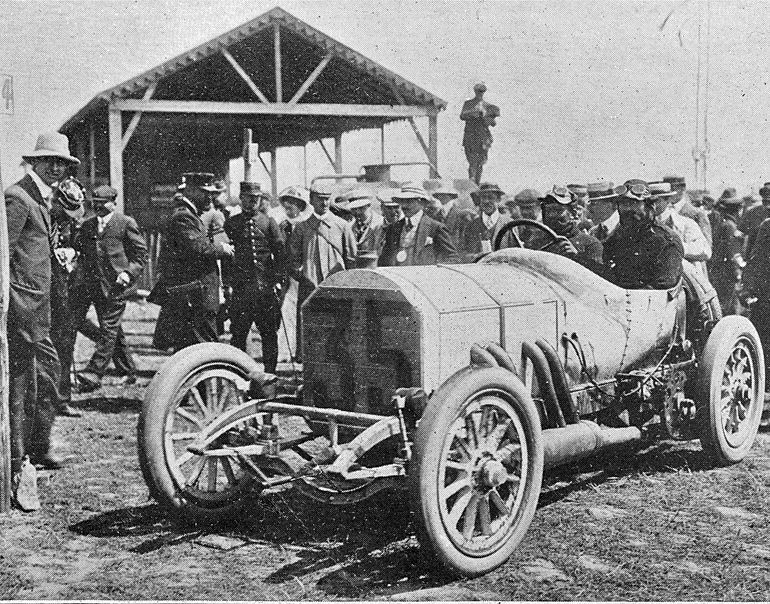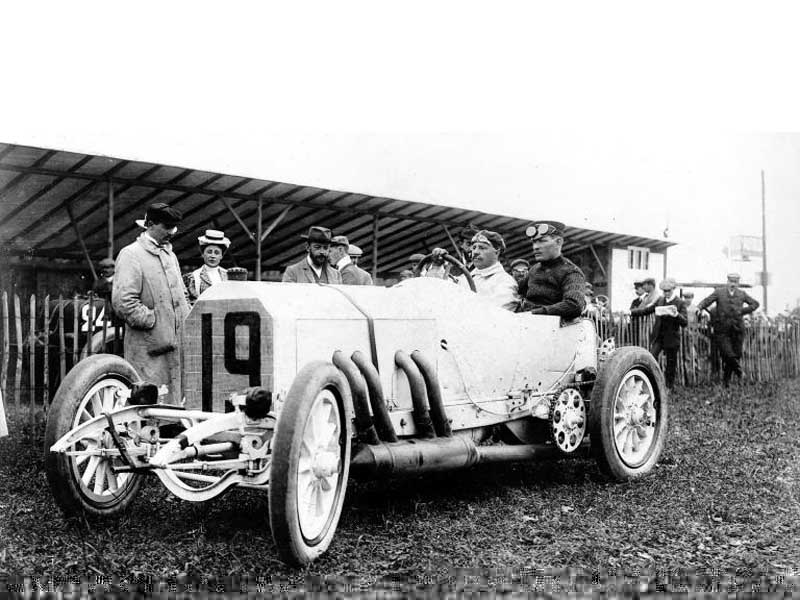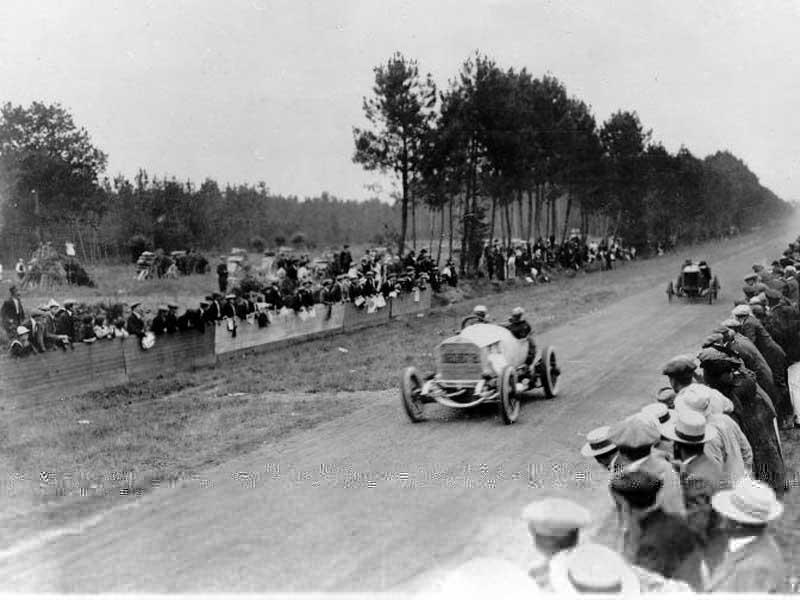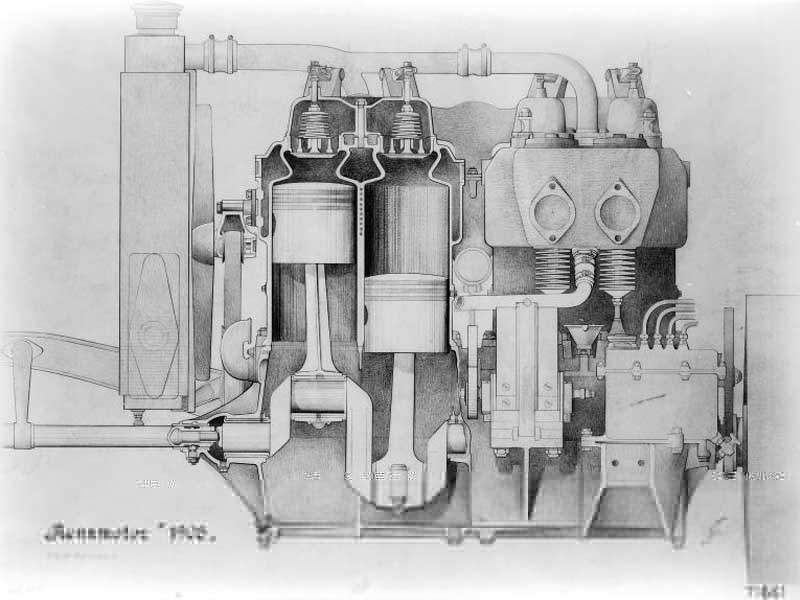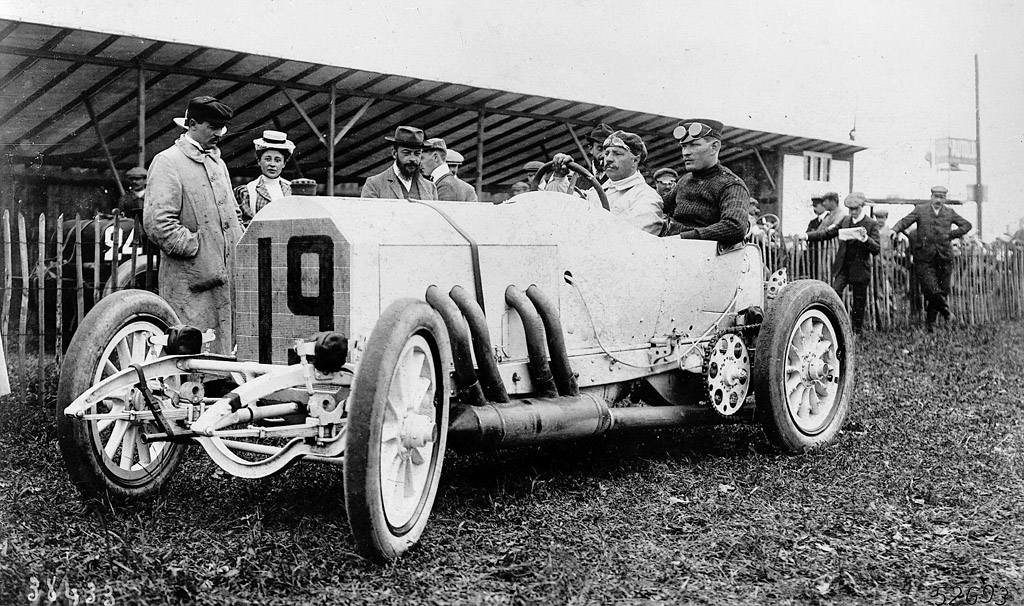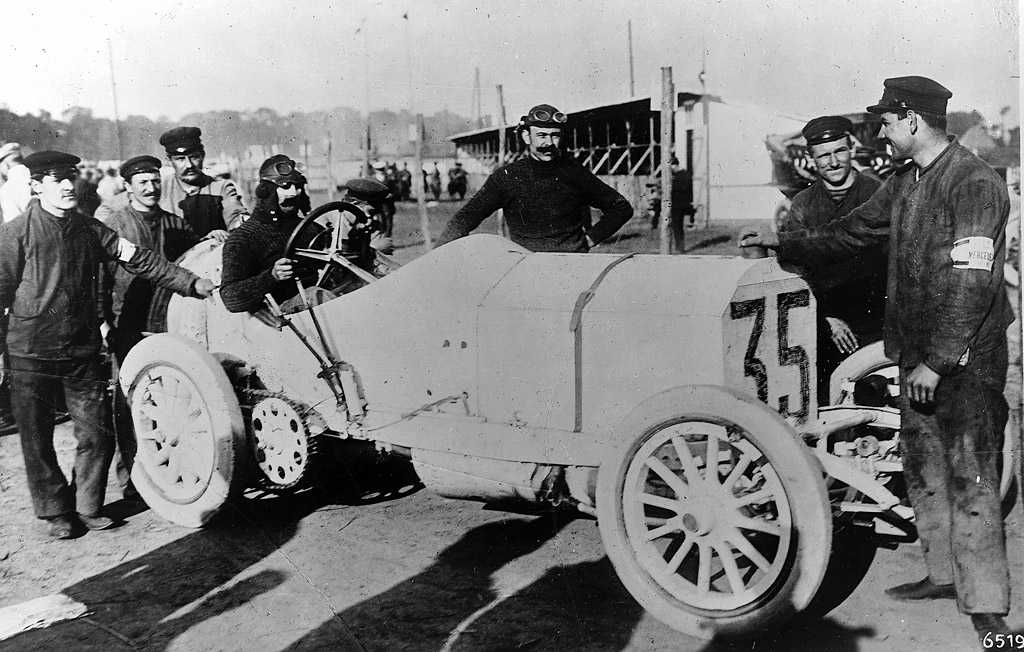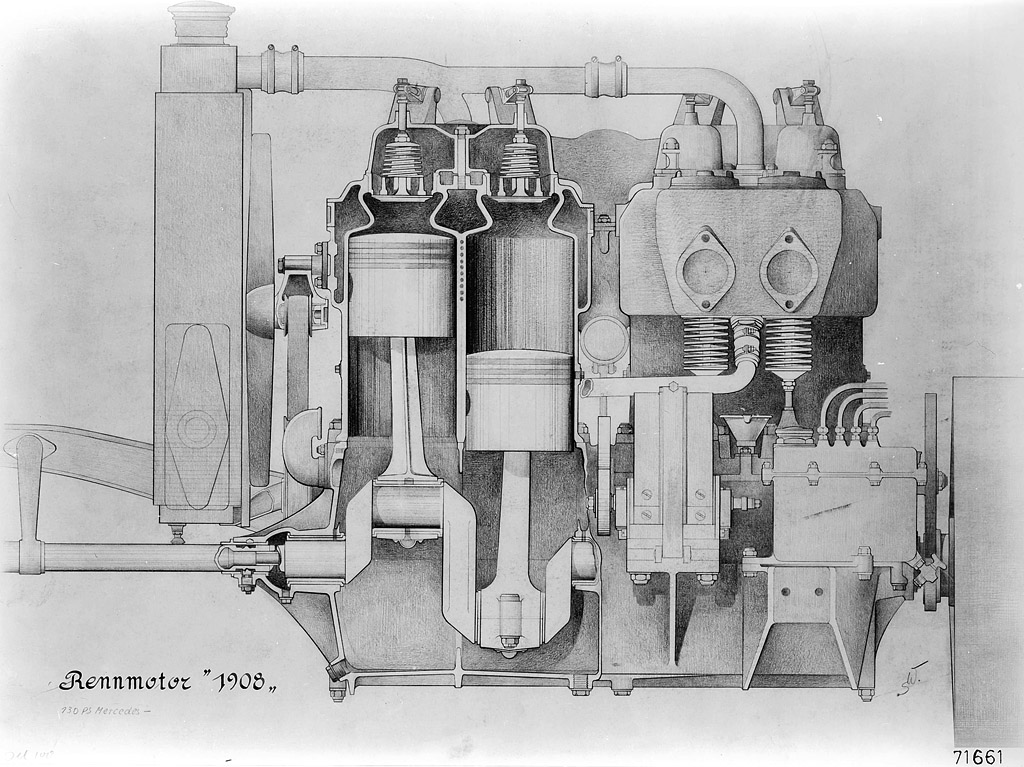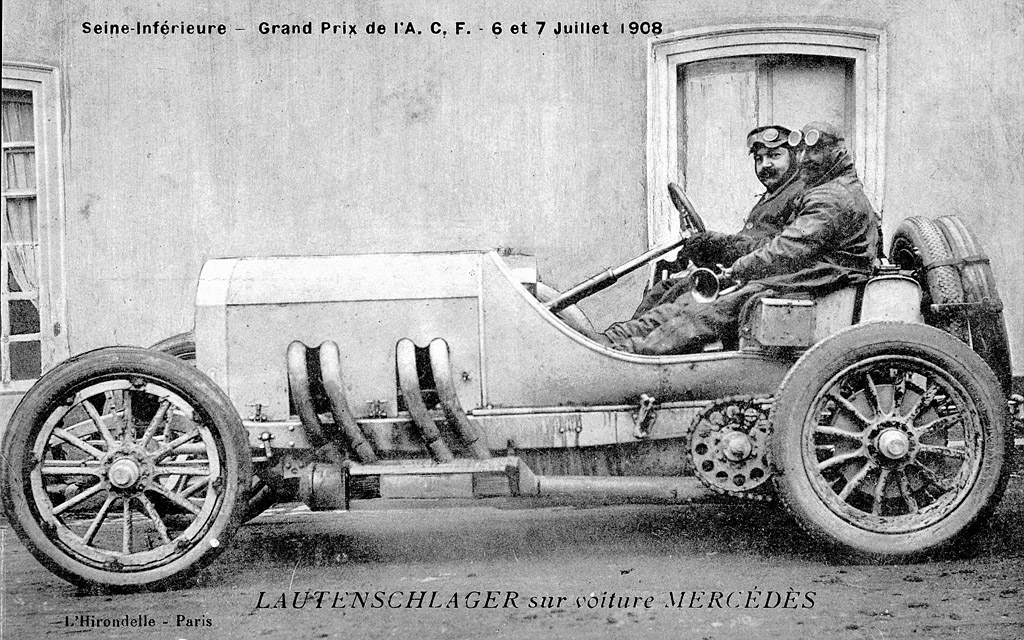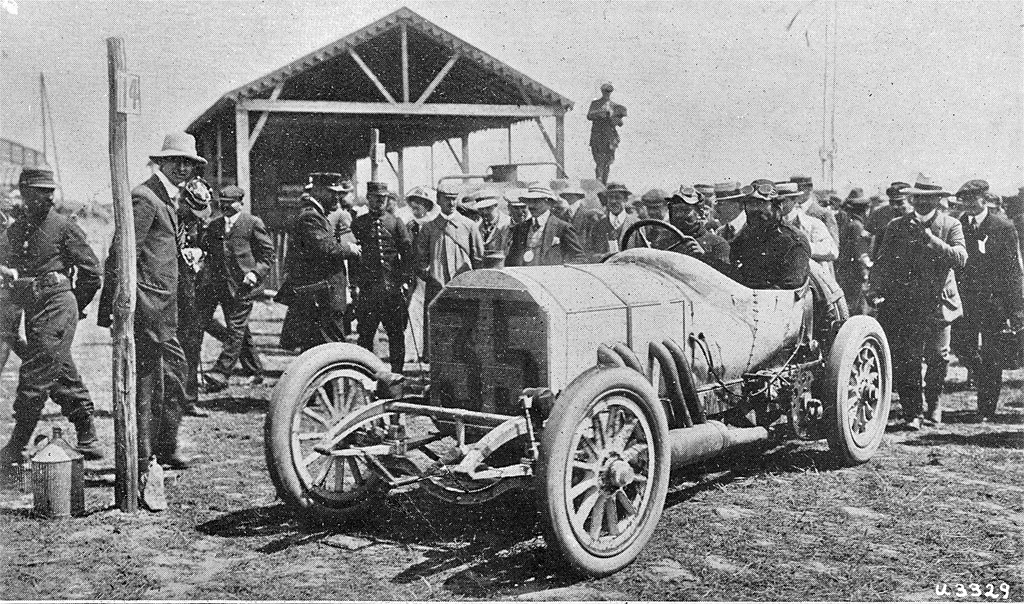1908 Mercedes 140HP
Mercedes was victorious at the 1908 French Grand Prix near Dieppe with a 140HP grand rpix car driven by Christian Lautenschlager. His car, number #35 was joined by two Benzs which placed 2nd and 3rd to the discomfort of the French Grand Prix organizers.
The Mercedes 140 hp for the 1908 season was based on the previous year’s model, but had been thoroughly revised in many details. The wheelbase was further shortened, the tire sizes were changed, and the tank shape was revised once more. The engine, an overhead valve design with twin camshafts below, overhead inlet valves and side exhaust valves, accorded with the concept developed by Wilhelm Maybach for the designs of the racing four-cylinders of the years 1903 to 1906. With a displacement of 12.8 liters the engine developed an output of 135 hp (99 kW) at 1400 rpm.
An exciting race
A total of 769.88 kilometers in ten laps had to be covered on public roads closed to other traffic. Lined up at the start of the competition, organized by the Automobile Club de France (ACF), were racecars of the Grand Prix category – famous drivers in famous cars. For instance, Camille Jenatzy in a Mors, Vincenzo Lancia in a Fiat, Fritz Opel in an Opel, Dario Resta in an Austin, Fritz Erle, René Hanriot and Victor Hémery in Benz 120 hp cars, and, of course, the DMG team, consisting of Christian Lautenschlager, Willy Pöge and Otto Salzer, who took the start in 140 hp Mercedes.
The favorites to win the trophy were several French and Italian cars and drivers, but Daimler too. Benz was also felt to have a good chance of winning: it was in fact that company’s first Grand-Prix race, but it had often fared well in rallyes and road races. The field had 48 participants all in all: 23 from France, nine from Germany, six each from England and Italy, three from Belgium and one from the USA. As in previous years the cars were painted to reflect their nationality – the German cars white, the American red and white, the English green, the French blue, the Italians red and the Belgians yellow.
The race was scheduled to begin at six in the morning so that even the last-placed drivers could reach the finish line while it was still light. The drivers took the track one by one. Willy Pöge, the second starter, soon took the lead in his Mercedes; his teammate Otto Salzer finished the first lap in first place. At the end of the second lap Lautenschlager was in the lead; in the third lap, Paul Bablot in a Brasier took the lead. In the fifth lap, at the halfway mark, Lautenschlager finally regained the lead and never gave it up again.
Despite the unfavorable conditions, especially for Daimler things worked out almost perfectly in Dieppe: Lautenschlager crossed the finish line in first place after six hours, 55 minutes and 43 seconds, barely nine minutes ahead of the runner-up – and with the last set of tires on board. His average speed over the entire distance was impressive 111.1 km/h. Teammate Otto Salzer turned in the fastest lap in 36 minutes and 31 seconds, which equated to an average speed of 126.5 km/h. Only about half the starters’ field reached the finish line – 23 cars.
despite stiff French competition. The winning Mercedes was driven by Christian Lautenschlager. Of the 48 cars entered in the event, 24 were seperate French teams. The car featured above is the 1908 Grand Prix Victor.
despite stiff French competition. The winning Mercedes was driven by Christian Lautenschlager. Of the 48 cars entered in the event, 24 were seperate French teams. The car featured above is the 1908 Grand Prix Victor.
In Detail
| submitted by | Richard Owen |
| engine | Water Cooled, Inline-4 |
| position | Front Longitudinal |
| aspiration | Natural |
| valvetrain | Twin Lateral Camshafts w/2 Valves per Cyl |
| displacement | 12824 cc / 782.6 in³ |
| bore | 155 mm / 6.1 in |
| stroke | 170 mm / 6.69 in |
| compression | 4.5:1 |
| power | 96.9 kw / 130 bhp @ 1400 rpm |
| specific output | 10.14 bhp per litre |
| bhp/weight | 116.07 bhp per tonne |
| body / frame | U-Section Pressed Steel Frame |
| driven wheels | RWD |
| front brakes | None |
| rear brakes | Drums |
| f suspension | Rigid axle with semi-elliptic springs |
| r suspension | Rigid axle with semi-elliptic springs |
| curb weight | 1120 kg / 2469 lbs |
| wheelbase | 2690 mm / 105.9 in |
| front track | 1400 mm / 55.1 in |
| rear track | 1400 mm / 55.1 in |
| top speed | ~160 kph / 99.4 mph |


